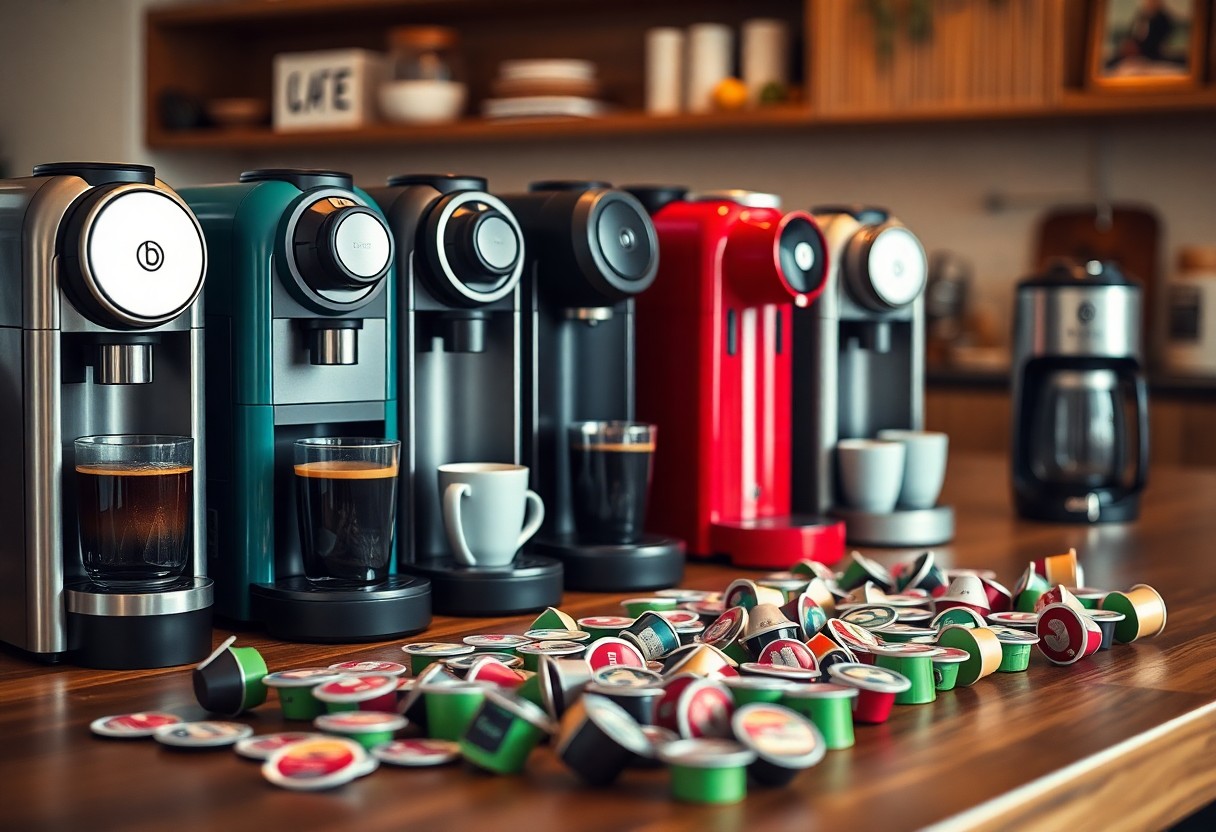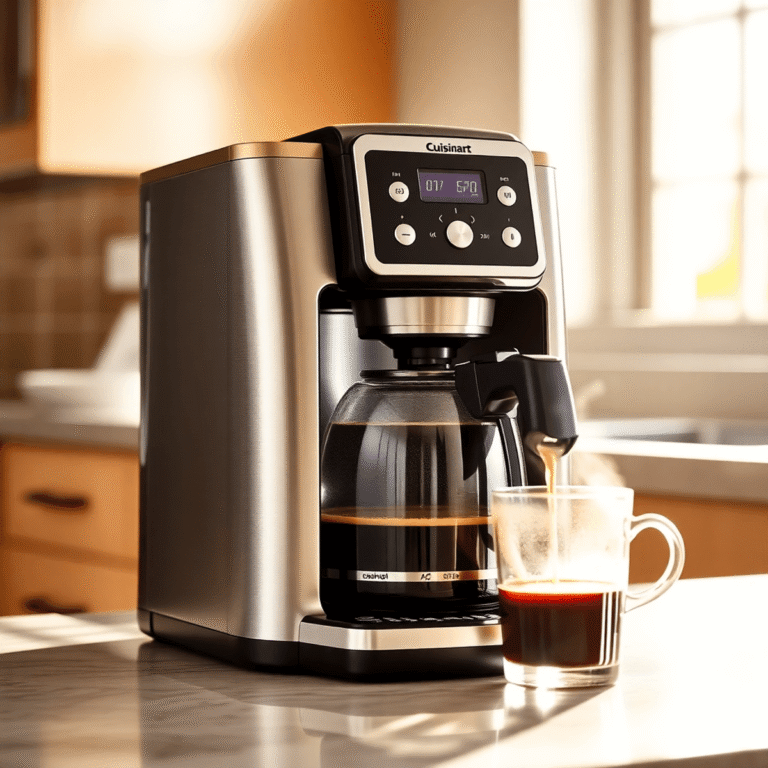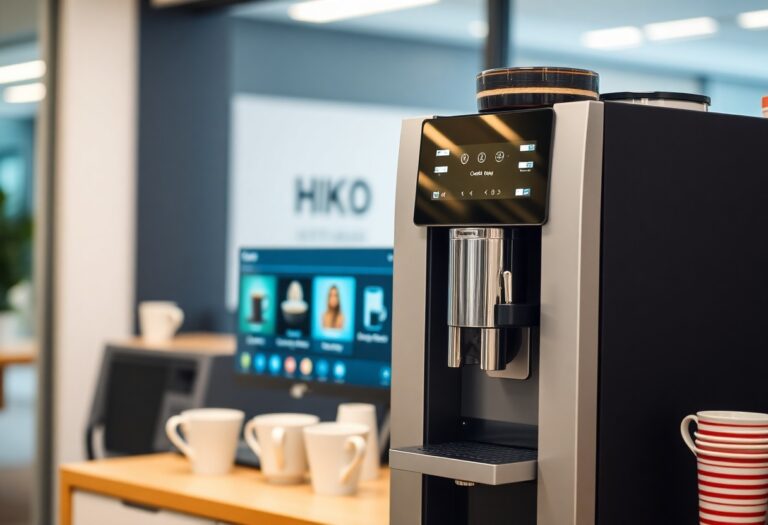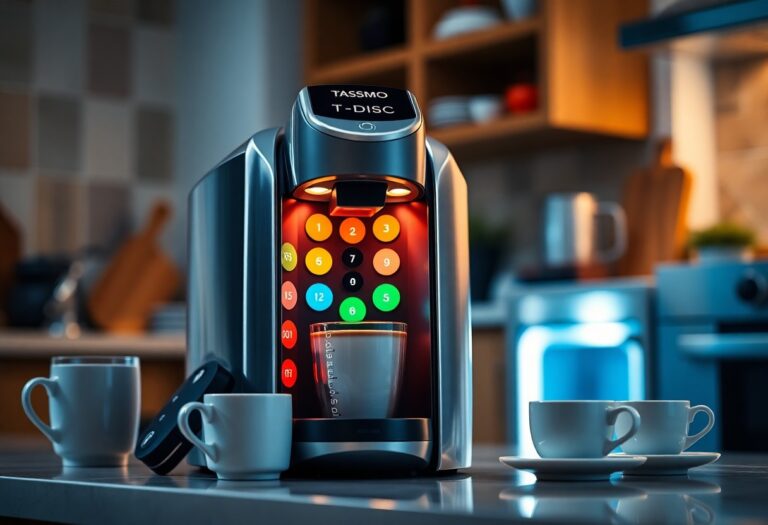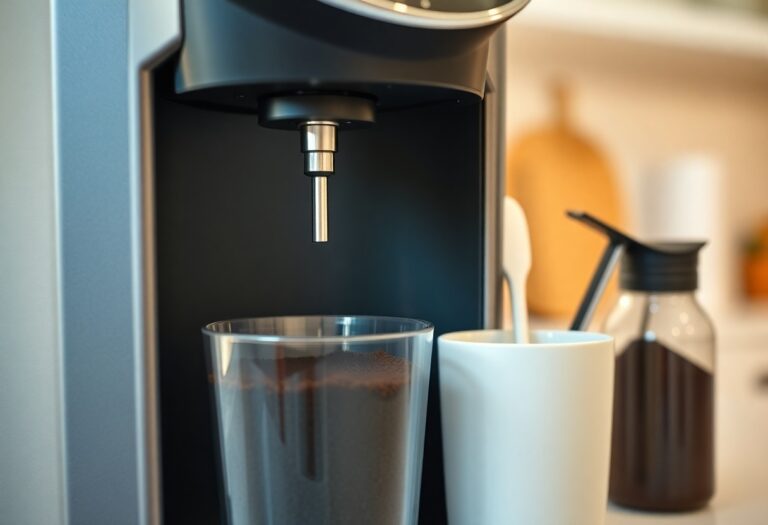What Coffee Machine Uses Pods – Pod System Overview
Machine choices can be overwhelming when it comes to coffee makers, especially with the rise of pod systems. These innovative coffee machines rely on convenient single-serve pods, allowing you to brew a fresh cup with minimal effort and less mess. Understanding the different types of pod machines can help you find the best fit for your needs, whether you prioritize speed, flavor variety, or ease of use. In this overview, discover the fundamental features and benefits of pod coffee machines to elevate your brewing experience.
Key Takeaways:
- Pod coffee machines offer convenience by using pre-packaged coffee pods, which simplify the brewing process and reduce cleanup.
- There are various pod systems available, including popular brands like Keurig, Nespresso, and Dolce Gusto, each with its unique features and types of pods.
- Pod compatibility is important; not all machines work with every pod, so understanding the specific system is necessary for selecting the right coffee.
- Pods come in a variety of flavors and strengths, allowing users to customize their coffee experience easily without measuring and grinding beans.
- Environmental concerns around single-use pods have led to innovations, including recyclable and reusable options to lessen waste.
The Mechanics of Pod Coffee Machines
Pod coffee machines operate with a simple yet effective mechanism that modernizes your coffee-making experience. By utilizing pre-packaged coffee pods, these machines eliminate the need for messy grounds, making your morning routine faster and cleaner. For a deep explore the best options available, check out The Best Single-Serve Coffee Maker for All the Pod People ….
How Pod Systems Function
Pod systems function by puncturing a sealed coffee pod, allowing hot water to flow through and extract flavors. Once you insert a pod and select your desired brew size, the machine heats the water and pressurizes it to ensure full flavor extraction. This rapid brewing process enables you to enjoy a fresh cup with minimal waiting time.
Key Components and Their Roles
Each pod coffee machine consists of several key components: the water reservoir, heating element, pump, and brew head. The water reservoir holds the water needed for brewing; the heating element quickly heats the water to the optimal temperature; the pump creates pressure to push water through the pod; and the brew head punctures the pod and distributes water evenly for perfect extraction.
The effectiveness of pod coffee machines hinges on these components working seamlessly together. The water reservoir ensures you have enough liquid for multiple brews without frequent refills. When you activate the machine, the heating element quickly reaches the ideal temperature, usually around 200°F, ensuring your coffee isn’t just hot but also brewed under the right conditions for maximum flavor. The pump generates sufficient pressure—around 7-10 bars—to extract all those rich coffee oils and aromatics, while the brew head’s design ensures that water flows uniformly, preventing weak or uneven coffee. With an understanding of these components, you can appreciate the convenience and quality that pod coffee machines offer.
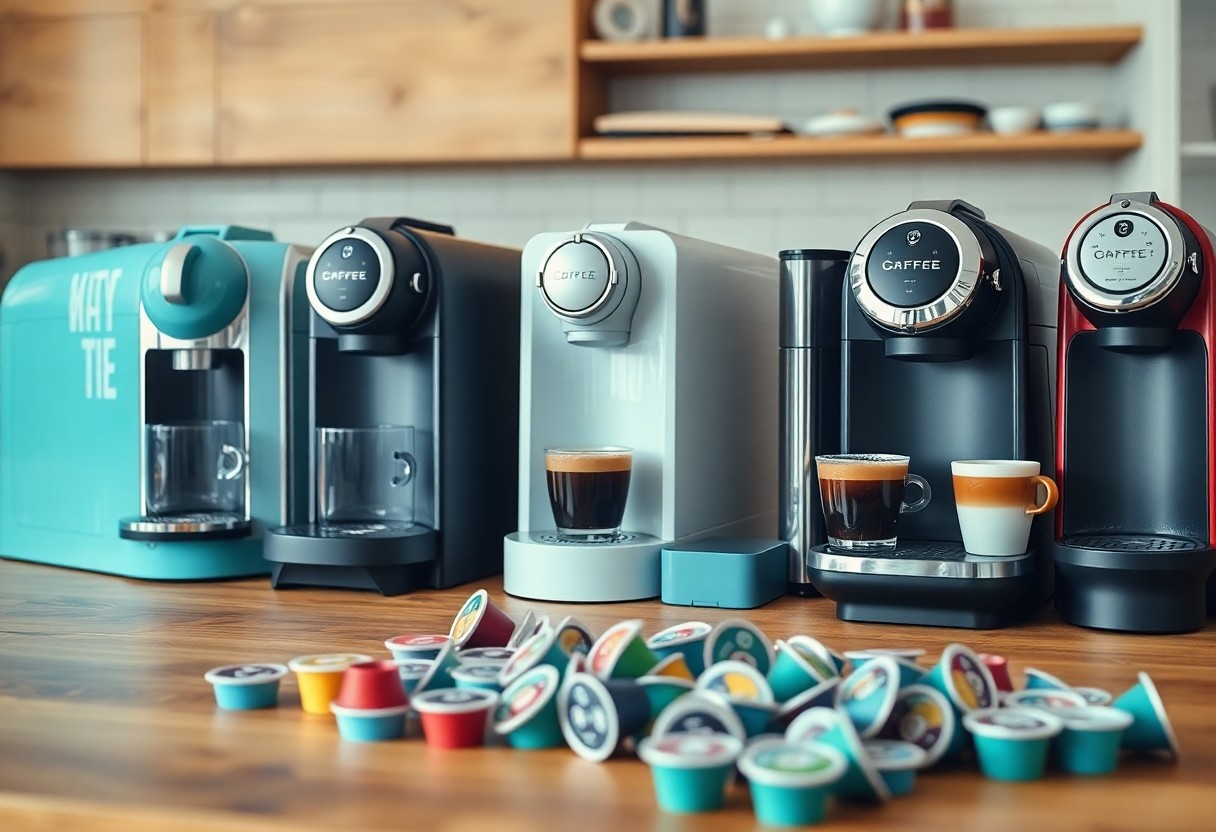
The Taste Test: Quality Comparison
| Factor | Observation |
|---|---|
| Flavor Profiles | Variety varies by brand; some prioritize boldness, while others focus on smoothness. |
| Freshness | Pods often compromise on freshness for convenience; consider single-origin options for a better taste. |
Flavor Profiles Across Different Brands
Brand selection significantly influences your coffee’s flavor. Renowned companies like Nespresso often create rich, aromatic profiles, while Keurig may focus on nutty or chocolatey notes, appealing to diverse palates. Exploring these various brands allows you to pinpoint which flavors resonate most with your taste preferences, ensuring a satisfactory cup each morning.
Freshness Versus Convenience
Balancing freshness with convenience is a common dilemma with pod machines. While pods provide a quick and easy brewing solution, they often lack the freshly ground taste of traditional coffee. The compromise can lead to dissatisfaction for those who prioritize a rich, freshly brewed experience over a quick cup.
In essence, fresh coffee beans deliver deeper flavors, while pod coffee may leave some coffee enthusiasts yearning for that aromatic kick. If you find yourself craving freshness, seeking out brands that utilize sealed pods or single-origin options can bridge this gap, enhancing both convenience and flavor. Additionally, some premium brands focus on processing pods that experience minimal oxidation, which further elevates the quality while maintaining user-friendly preparation.
Cost Analysis: Are Pods Worth It?
When weighing the cost of coffee pods, it’s imperative to analyze whether their convenience balances out the expense in the long run. Coffee pod prices can range from $0.50 to $1.00 per pod, making it a seemingly expensive choice compared to traditional ground coffee. If you often enjoy a daily cup, these costs can accumulate quickly. However, if convenience and speed are your priorities, investing in a system like the Ninja® DualBrew Pro Specialty Coffee System may be justified.
Long-Term Financial Implications
Choosing a pod system means upfront investment in the machine itself, often between $100 and $300, alongside the ongoing cost of purchasing pods. Over time, these expenses can add up significantly, especially for heavy coffee drinkers. Balancing the purchase price of the machine with your weekly pod consumption will provide insight into the overall financial impact. If you find yourself relying heavily on the machine, the cumulative costs could lead to deciding whether the convenience is worth the long-term expense.
The Price Per Cup Breakdown
The price per cup of coffee brewed from pods can vary widely based on factors such as brand and flavor. On average, a standard pod can cost about $0.60 each, leading to an estimated cost of $1.20 to $2.00 for a 12-ounce cup after considering water and energy used. If you consume just one cup daily, that’s around $18 to $60 a month, depending on your choices. Comparatively, brewing traditional coffee can cost between $0.15 to $0.30 per cup, raising questions about the justification of using pods from a budgeting standpoint.
When considering the price per cup breakdown, it’s vital to factor in your brewing habits. For instance, if you typically enjoy specialty flavors or unique blends offered in pod systems, this might rationalize the expenses for you. If you brew only one or two cups daily, the expense may seem substantial compared to traditional brewing methods. Yet, if convenience and variety matter more, pods can offer a significant advantage despite the higher cost.
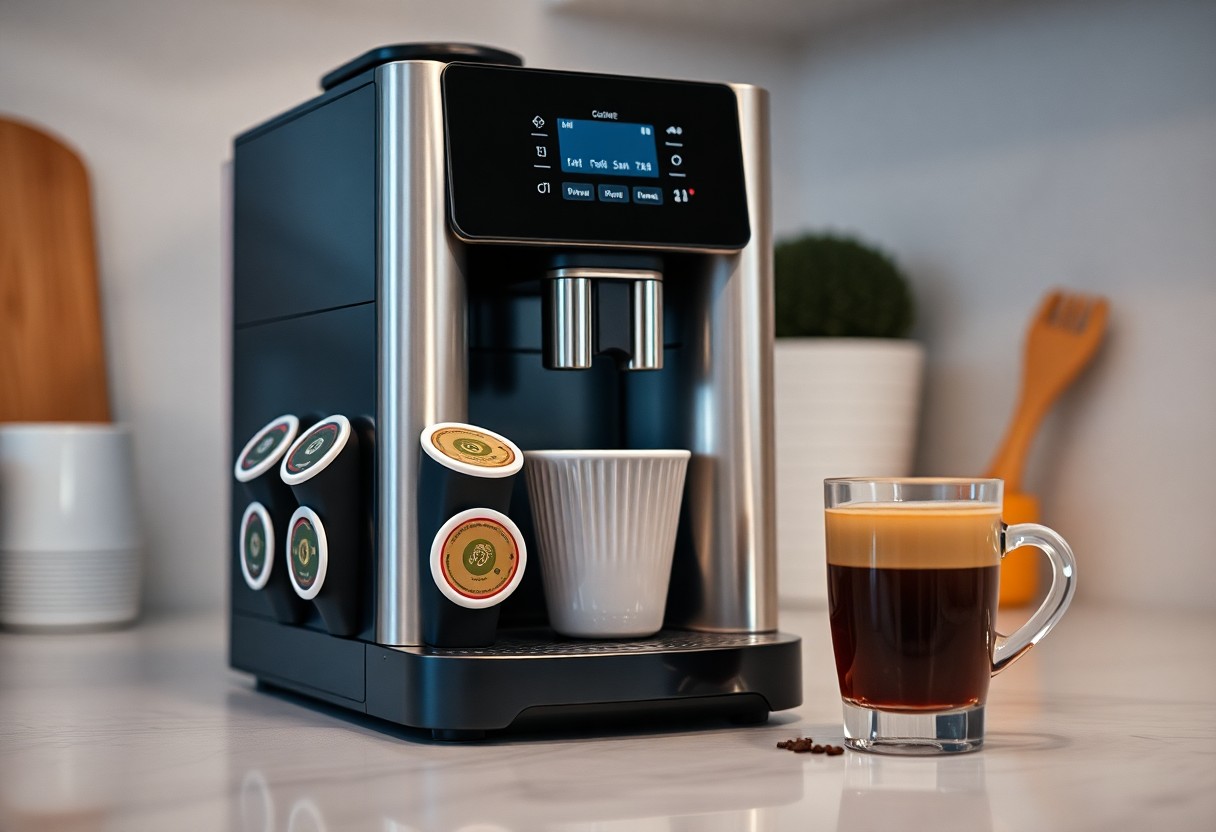
Environmental Impact
The rise of coffee pod systems has sparked significant discussions regarding their environmental impact. While these systems offer unparalleled convenience, they also generate considerable waste due to the non-recyclable materials used in many pods. The average consumer may not realize that a staggering approximately 29 billion coffee pods are discarded annually worldwide, contributing to ongoing concerns about landfill overflow and plastic pollution.
Waste and Sustainability Concerns
The coffee pod phenomenon raises serious sustainability concerns, particularly regarding the waste these single-use items create. Many traditional coffee pods are made from a blend of plastic and aluminum, making them challenging to recycle. This results in a high volume of waste that can take centuries to decompose, leading to environmental damage and further strain on waste management systems.
Innovations in Eco-Friendly Pod Options
Amid rising environmental concerns, manufacturers are responding with innovative eco-friendly pod options. Some brands have introduced biodegradable and compostable pods, which break down more easily in natural environments. This shift is paving the way for a more sustainable approach, allowing you to indulge in your coffee habit without compromising the planet.
Adding to the eco-friendly advancements, companies like Woken Coffee and Gourmesso are creating pods made from materials like plant-based bioplastics, which offer a more sustainable alternative to conventional plastic. These innovations not only reduce landfill waste but often come with clear labeling, making it easy for you to make environmentally conscious choices. Additionally, some brands are exploring refillable pod systems, further minimizing waste and allowing you to easily use your choice of coffee grounds. By embracing these eco-friendly options, you can savor your coffee while also playing a part in promoting a healthier planet.
Choosing the Right Pod Machine for You
Selecting the perfect pod coffee machine for your needs involves evaluating various aspects that fit your lifestyle and preferences. You might lean towards a simple model that focuses on basic functionality or a more advanced one that offers an array of features for a customized brewing experience. Ultimately, the right machine should fit seamlessly into your daily routine.
Factors to Consider: Size, Functionality, and Budget
Choosing a pod machine entails assessing several factors:
- Size: Ensure it fits your kitchen space without being cumbersome.
- Functionality: Different machines offer diverse features such as brewing strength settings and milk frothers.
- Budget: Consider not just the initial cost, but ongoing expenses like pod prices.
The right combination of these factors will help you make an informed choice based on your coffee-drinking habits.
Brands Worth Your Attention
Several reputable brands stand out in the pod coffee machine market, offering an impressive range of options to suit any preference. Brands like Nespresso, Keurig, and Hamilton Beach are favored for their high-quality brews and versatility. Nespresso machines, for example, deliver café-quality espresso with a wide selection of premium pods. Keurig, known for its convenience, allows you to brew various beverages, from coffee to hot chocolate, with ease. Hamilton Beach often presents budget-friendly alternatives without sacrificing quality, providing an excellent choice for those conscious of their spending while still wanting to enjoy great coffee.
Conclusion
So, as you explore various coffee machines that use pods, keep in mind the benefits of convenience and consistency they offer. You can choose from a range of options, including single-serve machines and multi-cup brewers, each tailored to enhance your coffee experience. Understanding the different pod systems available will help you make an informed decision based on your preferences. Ultimately, investing in a pod coffee machine can streamline your morning routine and deliver quality brews with minimal effort.
FAQ
Q: What are pod coffee machines?
A: Pod coffee machines are convenient coffee brewing devices that use pre-packaged coffee pods or capsules. These pods contain ground coffee sealed within a filter, allowing for an easy and mess-free brewing process. They come in various brands and formats, catering to different brewing styles, and simplifies the coffee-making routine by minimizing cleanup and preparation time.
Q: How do pod coffee machines work?
A: The operation of pod coffee machines typically involves inserting a coffee pod into the machine. When the user activates the machine, it pierces the pod, allowing hot water to flow through it and brew the coffee. The brewed coffee is then dispensed into a cup, producing a consistent and fresh cup of coffee with minimal effort. Many machines also offer settings for different cup sizes and strengths for personalized coffee experiences.
Q: What types of coffee pods are available?
A: There are various types of coffee pods available, including single-serve pods, which are specific to different machines, and multi-serve pods, which can brew multiple cups. Popular pod systems include Nespresso, Keurig, and Tassimo, each offering their proprietary pods with unique flavors and blends. Some brands also produce eco-friendly options, made from biodegradable materials, aligning with sustainable practices.
Q: Are there any downsides to using pod coffee machines?
A: While pod coffee machines are convenient, they do have some downsides. The coffee pods can be more expensive compared to buying ground coffee in bulk. Additionally, some users find that pod coffee lacks the depth of flavor that freshly ground coffee may provide. Environmental concerns also arise, as many pods are made from plastic or aluminum, leading to increased waste if not recycled appropriately. It’s important to consider both convenience and quality when choosing to use these machines.
Q: Can I use my own coffee in a pod machine?
A: Some pod coffee machines allow for reusable pods, which can be filled with ground coffee of your choice. This option can provide more flexibility and potentially save money in the long run. However, not all systems support reusable pods, so it’s imperative to check compatibility with your specific machine. Using a reusable pod may also require some experimentation to find the right amount of coffee for optimal flavor and strength.

